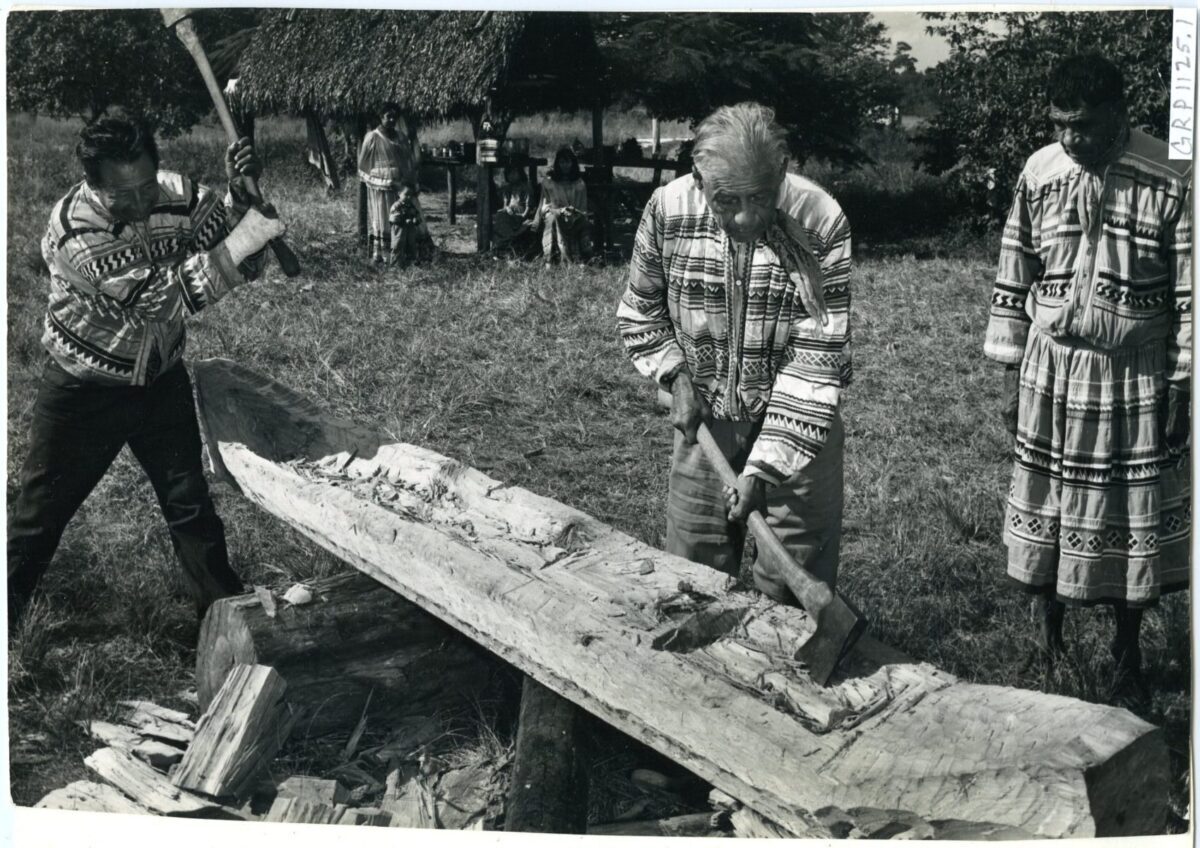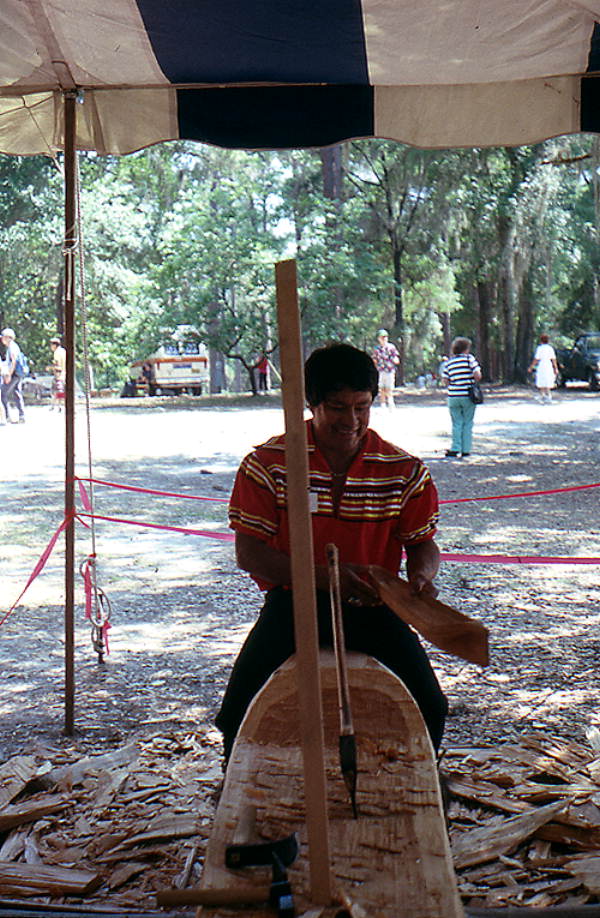
Certainly, here is an article in journalistic style about Seminole dugout canoe construction, approximately 1200 words in English.
Forged by Fire and Water: The Enduring Art of Seminole Dugout Canoe Construction
By [Your Name/Journalist’s Name]

In the emerald labyrinth of the Florida Everglades, where the sawgrass stretches to the horizon and the whisper of the wind through cypress knees tells tales of ancient times, the dugout canoe was not merely a vessel; it was a lifeline. For the Seminole people, masters of this watery wilderness, the creation of these remarkable boats was an act of profound skill, patience, and reverence – a sophisticated art form forged by fire and refined by generations of intimate knowledge of the land and its resources.
Today, as modern aluminum skiffs zip across the glades, the traditional Seminole dugout canoe stands as a powerful symbol of ingenuity, resilience, and an unbroken connection to a heritage shaped by water. Its construction, a painstaking process passed down through oral tradition and hands-on apprenticeship, offers a window into a world where survival depended on an intimate understanding of nature’s offerings.
The Heart of the Cypress: Selecting the Tree
The journey of a Seminole dugout canoe begins long before any tool touches wood. It starts with the identification of the perfect tree, almost exclusively the bald cypress (Taxodium distichum). This choice was no accident. Cypress, native to the Everglades, possesses qualities ideally suited for canoe construction: its wood is naturally rot-resistant, lightweight, and surprisingly strong. It grows straight and tall, offering a substantial trunk that can be hollowed out.
"The cypress is like a gift from the Creator," explains Billy L. Cypress, a member of the Seminole Tribe of Florida and former director of the Ah-Tah-Thi-Ki Museum. "It grows right here, in our homeland, and it provides everything we need. It’s not just wood; it’s part of our family, our history."
The selection process was meticulous. The artisan, often an elder with years of experience, would seek a tree of significant diameter – sometimes three to four feet across at the base – with a straight, unblemished trunk, free from major knots or defects that could compromise the integrity of the finished canoe. Respect for the tree was paramount. Before felling, a prayer or offering might be made, acknowledging the sacrifice the tree was about to make for the community’s sustenance and mobility.
Felling and Shaping: The Herculean Task
Once the ideal cypress was identified, the arduous task of felling began. In ancient times, before the arrival of European metal tools, this involved a painstaking process of controlled burning at the base of the tree, followed by scraping away the charred wood with stone axes, shell adzes, or sharpened pieces of wood. This could take days, even weeks, of relentless effort. The sheer physical demands highlight the community effort often involved, with multiple hands contributing to the monumental undertaking.

With the tree brought down, the next phase involved roughing out the exterior shape of the canoe. The trunk was stripped of its bark, and the top half was flattened. The bow and stern were carefully shaped, tapering to points or slightly upturned ends, designed to glide efficiently through the shallow, often weed-choked waters of the Everglades. The sides were gradually thinned, creating the basic hull profile. This initial shaping was done using the same primitive tools, relying on the artisan’s eye and innate understanding of hydrodynamics.
"You have to see the canoe inside the log," a Seminole elder once reportedly said, encapsulating the intuitive vision required. "It’s already there; you just have to help it come out."
The Fire Method: Hollowing the Heartwood
Perhaps the most iconic and ingenious aspect of Seminole dugout canoe construction is the method of hollowing out the interior using fire. This technique, practiced for millennia, was not simply about burning a hole; it was a highly controlled and sophisticated process that required immense skill and constant vigilance.
After the exterior was shaped, a series of small, controlled fires were lit along the length of the flattened top surface of the log. These fires were carefully monitored, often by placing damp clay or mud along the edges to prevent the flames from spreading too wide or burning too deep in unwanted areas. The heat from the fire would char the wood, making it brittle and easier to remove.
Once a section was sufficiently charred, the artisan would use a variety of tools – often shell scrapers, sharpened deer antlers, or stone adzes, and later metal tools obtained through trade – to scrape away the burned wood. This process was repeated, section by section, layer by layer. The rhythmic scraping, the smell of cypress smoke mingling with the damp air, would have been constant companions during this phase.
The challenge lay in maintaining an even thickness throughout the canoe’s walls and floor. Too thin in one spot, and the canoe would be weak and prone to leakage; too thick, and it would be unnecessarily heavy and less agile. The artisan relied on touch, sound, and a deep understanding of the wood’s properties. Sometimes, small stones or pebbles would be placed inside the hull to gauge the thickness by sound when tapped from the outside.
This hollowing process could take weeks or even months, depending on the size of the canoe and the number of people working on it. It was a testament to the Seminole people’s patience, dedication, and mastery of their craft.
Finishing Touches and Practicality
Once the desired depth and wall thickness were achieved, the canoe underwent a final smoothing and finishing process. The interior and exterior surfaces were scraped meticulously, removing any rough spots or char marks. Sometimes, the surface would be hardened by scorching it lightly with fire and then rubbing it down, a process that could also enhance its water resistance. Natural resins or oils might have been applied to further seal and protect the wood.
The resulting vessel was a marvel of indigenous engineering. Seminole dugout canoes varied in size, from small, one-person hunting vessels to larger canoes capable of carrying multiple individuals and supplies for long journeys or even transporting entire families during times of conflict or relocation. They were remarkably stable, well-suited for navigating the shallow, winding waterways, and quiet enough for stealthy approaches during hunting.
"The canoe was our highway," a contemporary Seminole artisan, Samuel Tommie, once remarked. "It was how we moved, how we hunted, how we lived. Without it, we would not have survived in the Everglades."
Cultural Significance and Enduring Legacy
Beyond its practical utility, the dugout canoe held profound cultural significance for the Seminole people. Its creation was an act of communion with nature, a tangible expression of their intimate relationship with the land and its resources. It embodied qualities highly valued within the culture: patience, perseverance, ingenuity, and a deep respect for the natural world.
The knowledge required to build a canoe was not simply technical; it was holistic. It encompassed an understanding of botany (the properties of cypress), physics (hydrodynamics and buoyancy), and ecology (the best places to find suitable trees). This knowledge was part of the oral tradition, passed from elders to younger generations through observation, participation, and storytelling. It reinforced community bonds, as the task often required cooperative effort.
Today, while modern modes of transportation have largely replaced the daily use of dugout canoes, the art of their construction is far from lost. The Seminole Tribe of Florida, through initiatives at places like the Ah-Tah-Thi-Ki Museum and various cultural preservation programs, actively works to keep this ancestral knowledge alive. Younger generations are taught the traditional methods, ensuring that the whispers of cypress and the stories of fire-forged vessels continue to resonate through the Everglades.
Master artisans, like the late Jimmy Osceola and others, dedicated their lives to preserving and transmitting this vital cultural practice. Their efforts ensure that the skills, techniques, and the profound respect for the natural world that defined Seminole canoe builders of the past remain a living legacy.
In a world increasingly disconnected from traditional crafts and natural cycles, the Seminole dugout canoe stands as a powerful reminder of human ingenuity, adaptability, and the enduring strength of cultural identity. It is a testament to a people who, faced with the unique challenges of their environment, not only survived but thrived, navigating their world with grace, skill, and a deep reverence for the gifts of the land and water. The cypress whispers, and the Seminole canoe continues its silent journey through time, a testament to a timeless bond between people, nature, and the art of creation.


